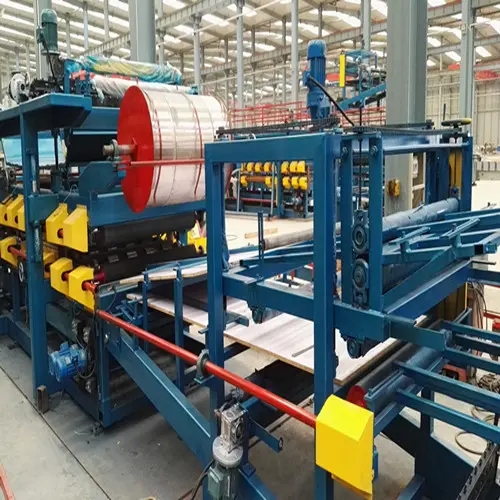
Cold Room Panel Roll Forming Machine Enhancing Efficiency in Construction
In the modern construction industry, efficiency and precision are paramount, especially when it comes to the manufacturing of cold room panels. The cold room panel roll forming machine has emerged as a significant technological advancement, streamlining the production process and ensuring high-quality outputs. This article delves into the features, benefits, and applications of cold room panel roll forming machines, illustrating their crucial role in the construction sector.
Understanding Cold Room Panels
Cold room panels are essential in the construction of refrigerated storage facilities, ensuring optimal thermal insulation. These panels are designed to regulate temperature, making them ideal for preserving perishable goods in various industries, including food processing, pharmaceuticals, and biotechnology. The panels are typically constructed using polyurethane or polystyrene foam, encapsulated between two layers of sheet metal, creating a robust thermal barrier.
The Role of Roll Forming Machines
Roll forming is a manufacturing process that involves the continuous bending of a long strip of metal into a desired cross-sectional profile. This technique is particularly advantageous for producing cold room panels, as it allows for the efficient creation of consistent and precise shapes. Cold room panel roll forming machines automate this process, significantly reducing manual labor and enhancing productivity.
Key Features of Cold Room Panel Roll Forming Machines
The cold room panel roll forming machines are equipped with several advanced features that contribute to their efficiency and versatility
1. Modularity Many machines come with interchangeable roll form tooling, allowing manufacturers to produce different panel sizes and shapes without needing extensive modifications. This flexibility caters to various project requirements.
2. High Speed and Precision These machines can produce panels at high speeds while maintaining tight tolerances. This capability ensures consistent quality across large production runs, meeting the demands of large-scale construction projects.
3. Integrated Systems Modern roll forming machines often include integrated cutting systems, ensuring that panels are cut to exact lengths as they are formed. This feature minimizes waste and maximizes efficiency.
4. Automated Processes With advancements in technology, many roll forming machines incorporate automation features, such as PLC (Programmable Logic Controller) systems. These allow for easy operation, monitoring, and adjustments, reducing the risk of human error.
Benefits of Using Cold Room Panel Roll Forming Machines

The implementation of cold room panel roll forming machines offers numerous advantages
- Cost Efficiency By automating production, companies can significantly reduce labor costs and time, leading to lower overall production expenses.
- Consistent Quality The precision of roll forming ensures that every panel meets the specifications, reducing the need for rework and enhancing quality assurance.
- Waste Reduction The ability to cut panels to exact lengths minimizes material waste, contributing to sustainability goals and overall cost savings.
- Versatility Cold room panel roll forming machines can be adapted for various panel types, allowing manufacturers to cater to a broad range of industries and applications.
Applications of Cold Room Panel Roll Forming Machines
Cold room panel roll forming machines are extensively used in the construction of
- Refrigerated Warehouses These machines provide the necessary efficiency and insulation for large storage facilities.
- Food Processing Plants Maintaining specific temperature controls is crucial in these environments, making cold room panels indispensable.
- Pharmaceutical Facilities The need for precise temperature regulation for drugs makes these panels vital in pharmaceutical construction.
Conclusion
The cold room panel roll forming machine represents a significant leap forward in the construction industry. By enhancing efficiency, reducing costs, and ensuring consistent quality, these machines play a pivotal role in producing high-quality cold room panels. As the demand for temperature-controlled environments continues to grow, the importance of advanced manufacturing technologies like roll forming will only increase, solidifying their place in the future of construction.